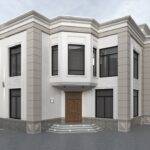Description
Foam Logos and Branding
EPS (Expanded Polystyrene) or foam logos and branding are innovative and versatile materials used to create impactful visuals for events and occasions. EPS is a lightweight, rigid foam material that can be easily shaped, carved, and molded into various forms, making it an ideal choice for creating eye-catching logos and branding elements.
Advantages of EPS Logos and Branding
1. Lightweight and Portable: EPS logos and branding are lightweight, making them easy to transport and set up at different event locations. This portability allows for quick installation and removal, saving time and effort.
2. Customizable and Versatile: EPS can be easily shaped into any desired form, allowing for limitless possibilities in logo and branding design. It can be carved into intricate details, curves, and shapes, enabling businesses to create unique and memorable visual displays.
3. Cost-Effective: EPS is an affordable material compared to other options like metal or acrylic. It offers a cost-effective solution for businesses and event organizers looking to create visually impactful branding without breaking the bank.
Comparison between EPS or Foam and Other Materials Used in Logos and Branding
When comparing EPS or foam logos and branding with other materials commonly used in logo design, such as metal, acrylic, or wood, several key advantages become apparent. While metal may offer durability and a sleek appearance, it can be heavy and expensive. Acrylic is versatile but may lack the depth and texture that foam can provide. Wood, on the other hand, can be prone to warping and is less suitable for intricate designs. EPS or foam strikes a balance by offering lightweight versatility, cost-effectiveness, and the ability to achieve intricate details.
Application Process and Finishing
Creating EPS or foam logos and branding involves a multi-step process. First, the desired design is created digitally or as a physical template. Next, the EPS foam is cut or shaped according to the design using specialized CNC cutting machines or hot wire cutters. Once the basic shape is achieved, the foam can be further refined and detailed using sanding tools or carving techniques. Finally, the foam is coated and finished with a protective layer, such as a hard coating or a paint finish, to enhance its durability, weather resistance, and visual appeal.











